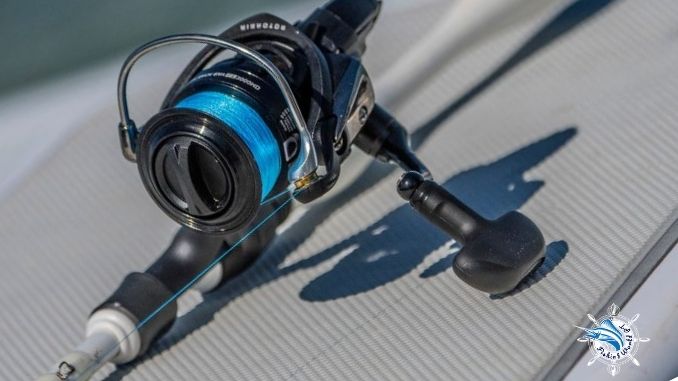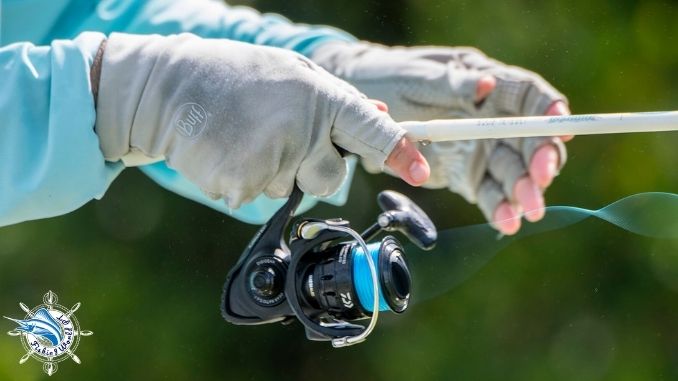It is impossible to know everything to set up the perfect fishing kit if you are a beginner. There are too many things you need to learn to improve the efficiency of your trip in the best way.
Today, I will show you things related to anti-reverse on the fishing reel. It is a fairly simple term, easy to understand. Just looking at its name, you probably already have a preliminary answer.
However, there are so many types of anti-reverse out there and how to tell them apart. So don’t worry too much about it; they almost have the same function.
What is continuous anti reverse reel? A continuous anti reverse reel is a roller bearing containing off-set rollers, which keeps your reel from spinning in the opposite direction when the fish changes direction. It is pretty different from anti-reverse types in that it does not make noise when rotating and is 100% anti-reverse.
I will present more information about the anti-reverse reel; you can refer below.
Some things to know about anti-reverse
Back reeling technique
Anti-reverse was born based on a rather old-fashioned technique called “back reeling.” This technique allows you to adjust the resistance from light to heavy depending on the conditions. We usually use it to reduce the tension of the line.
It comes in handy when you are dealing with unexpected situations like encountering larger fish. For example, when you fish with a light line (4-8lb), there is a risk of the line breaking if large fish take your bait.
And in this situation, the back reeling technique will work well. When your fishing line reaches a certain level and is in danger of breaking, you can rotate it back to relieve the tension and continue fighting the fish. The fishing line is also quite expensive, especially the fluorocarbon, so it would not be enjoyable to spend a lot of money replacing the new line.
Although this technique is no longer relevant to today’s technologically advanced reels, I’m sure quite a few still use it out of habit. Why do I say that? Most reels these days have powerful performance features. But in some cases, as I mentioned above, this technique is still beneficial.
You can master this technique in a few fishing trips, and I think you should get used to this technique if you fish smaller fish. There will come a time when you need to use it.
Drag system
To start working with anti-reverse, you must first understand a bit of the drag system.
It allows you to adjust the tension of the line. If you keep the correct tension, then you have a great chance of winning the fish. The line tension is just proper; too big will lead to the end of the line; if too loose, the hook will slip out of the fish’s mouth, and you have missed the opportunity.
I recommend doing a lot of research, consulting with an expert, and fighting with fish to master tension adjustment. It affects the total amount of fish you catch on a trip.
Anti-reverse
Usually, there is an anti-reverse switch located at the end of the reel. Turning it on prevents the shaft from rotating in reverse; you can rotate in both directions by turning it off. It’s a pretty helpful thing to control the tension of the line.
You can find this set of switches on many types of reels, such as spinning and baitcasting (very few, most brands remove it because they consider back reeling an outdated technique). So you can apply it more depending on different fields and environments.
However, anti-reverse’s “fatal” limitation is that it provides a certain amount of tension when fishing. It won’t matter when you’re fishing for lighter fish, but with larger fish since bass, that tension won’t be enough for you to fight. Therefore, turn off this feature when encountering larger fish.
Besides that, I would advise you to best not use this mode for saltwater fishing. When salt gets into the anti-reverse switch, your reel will fail soon.
Tips for using the anti-reverse feature
Always turn it on before switching to drag
You will not be able to predict the direction of the fish’s movement, so you may turn in the wrong order when catching, leading to tangled lines or loss of fish.
So make sure you always flip the switch before you finish setting the hook and button to using drag to fight the fish.
However, if the fish is too big, turn it off as quickly as possible.
Keep in mind the position of the anti-reverse switch
Always keep in mind the specific position of this tool on your reel to react as quickly as possible to flip it as needed. Several reels will have quite different places, so don’t get confused.
Not for saltwater fishing
As I said above, saltwater entering the switch will cause it to experience damage and affect the performance of your fishing trip. Therefore, in the past 30 years, the number of saltwater reels equipped with an anti-reverse feature has decreased significantly. Consequently, you should only use it if you have a specific purpose.
Proficient in line tension management
Anti-reverse will have no place in your reel if you’ve mastered the management of line tension and you’ve been able to use traction to fight fish in all circumstances.
You can refer to how to set the tension of the reel; it is the primary thing for you to manage the tension in the line.
Conclusion
In my personal opinion, I don’t think you should use the anti-reverse feature to fight fish; it has more disadvantages than advantages. However, if you have specific purposes that need to be used, do not hesitate to use them. After all, fishing is a sport that depends a lot on personal preferences and goals.
I have shared my experience with anti-reverse features, maybe it’s not exhaustive, but honestly, there’s a lot of things that I can’t touch on all of them. But I hope this article can be helpful to you.
Further reading:
- Other info about fishing gear in fishingandhuntingsports
- Anti-Reverse Question
- Selective continuous anti-reverse mechanism for a fishing reel



